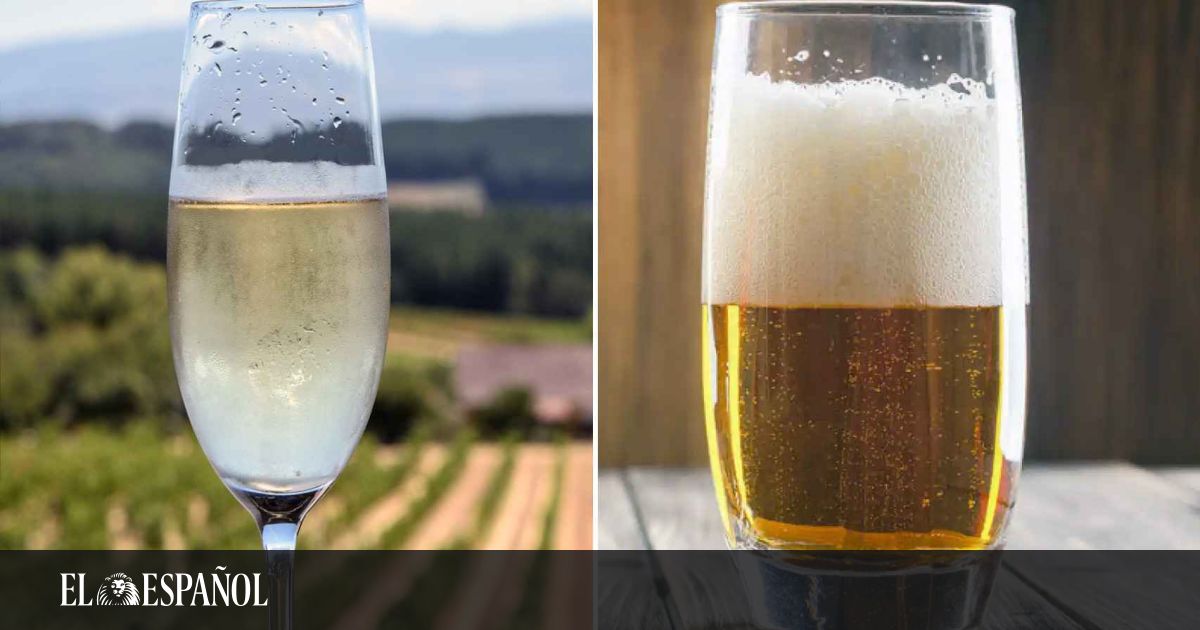One of the sounds that is repeated most often at any celebration is the sound of an uncorked champagne bottle. This sparkling wine with a certain percentage of sugar is distinguished not only by its golden color, but also by how fizzy it is. You might think the latter isn’t special because it occurs in other beverages, such as soda, beer, or sparkling water. However, a study has shown this Champagne bubbles don’t rise the same way than any other liquid.
Simply pour a glass of champagne and watch the bubbles get bigger and move faster as they rise. “This is the kind of research I’ve been working on for years.Roberto Zenit, a professor at Brown University (USA), one of the authors of the paper –How could it be otherwise, it is a French drink– Researchers from the University of Toulouse (France) also participated.
Although it may seem like a harmless discovery, the truth is that the way champagne bubbles rise can have an impact on our daily lives, as Zenith itself warns: “We want to show people that Fluid mechanics is important in your everyday life“.
[El truco de la cuchara en la botella para que no se escapen las burbujas: ¿mito o realidad?]
In fact, the main objective of the research published in magazine Physical review fluidsAnd It was a study of how bubbles behave in different soft drinks. to be sure, I decided to eliminate carbonation from champagne, beer, sparkling wine, and soda.
bubbles in a straight line
Depending on the ingredients in the drink, the movement of the bubbles can be different. For example, in beer the bubbles deflect to the sides, making it appear as if several bubbles are rising at once. instead of, In a glass of champagne the bubbles rise in single file And for a long time. This is a stable series of bubbles, unlike beer.
With both motions in mind, the researchers looked at the mechanisms by which some bubbles were more stable than others. They even wondered if it was possible to recreate it, turning a stable chain of bubbles into one that wasn’t.
The results of the experiments showed that the stable bubble chains of champagne and other sparkling wines due to surfactants, and some of the molecules also found in detergents. By sticking to the bubbles, these molecules facilitate the rising of the bubbles. “The protein molecules that cause the unique taste of champagne are the same ones that make the chains of bubbles it produces stable,” Zenit says.
In tests, they also find it The stability of bubbles is affected by their size. When they increased the size of the bubbles, they were able to stabilize the unstable bubble chains, even without the surfactants. When they kept the bubble size constant and only added surfactants, they also found that they could transition from unstable to stable chains.
Thus, the authors conclude that there is Two different ways to stabilize a series of bubbles. On the other hand, by making the bubbles themselves larger. Or if not, add surfactants to the drink.
Molecules similar to these are also found in some beers which produce the same bubbling action as in champagne. instead of, Carbonated water bubbles are always unstable, As no type of molecules prefer this type of flow. “In this case, instead of having a single line, the bubbles end up rising in a cone shape,” says the professor from the American University.
Why this
For the researchers, the results of the recent study go beyond the ability to appear as someone with knowledge of all kinds when a champagne toast is produced at a celebration. As they pointed out, The results provide a general framework in fluid mechanics To understand the formation of agglomerates in bubbling flows.
This process doesn’t just happen every time we serve a glass of champagne. There are technologies that use mixing caused by bubbles, such as aeration tanks in water treatment facilities. Those in charge of these facilities would benefit from a clearer understanding of how bubbles are distributed in space.
In nature, understanding these flows It could help explain ocean seeps better Where methane and carbon dioxide rise from the ocean floor. These results can also be used with other non-carbonated drinks such as whiskey. That’s right, a person can estimate the alcohol content by shaking the bottle and seeing how the bubbles respond.
For their part, the researchers plan to continue studying the mechanisms of stable bubble chains to try to apply them to different aspects of fluid mechanics, especially in bubble flows. “We are interested to know how these bubbles move and its relationship to industrial applications and in nature, ”concludes Zenit.





